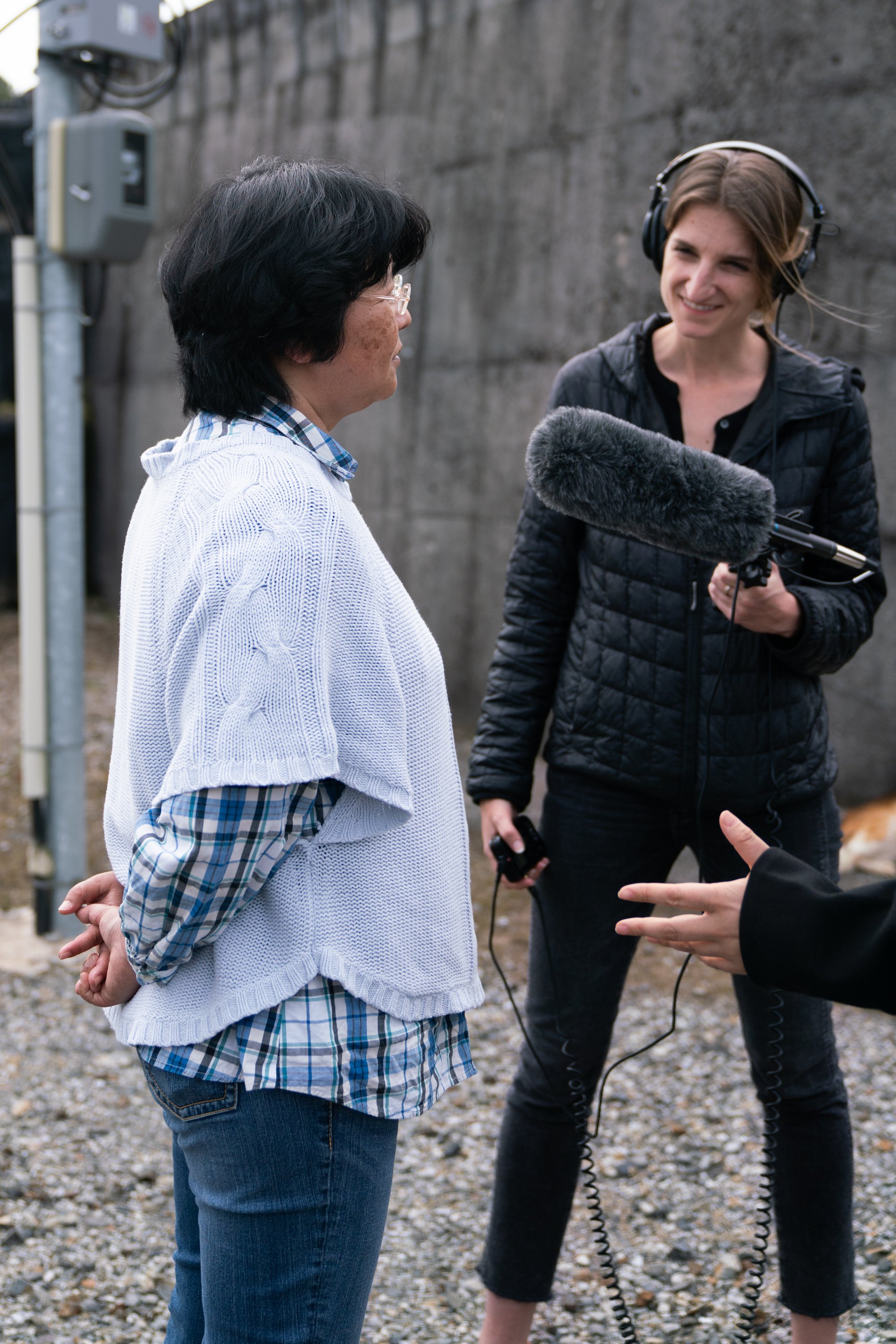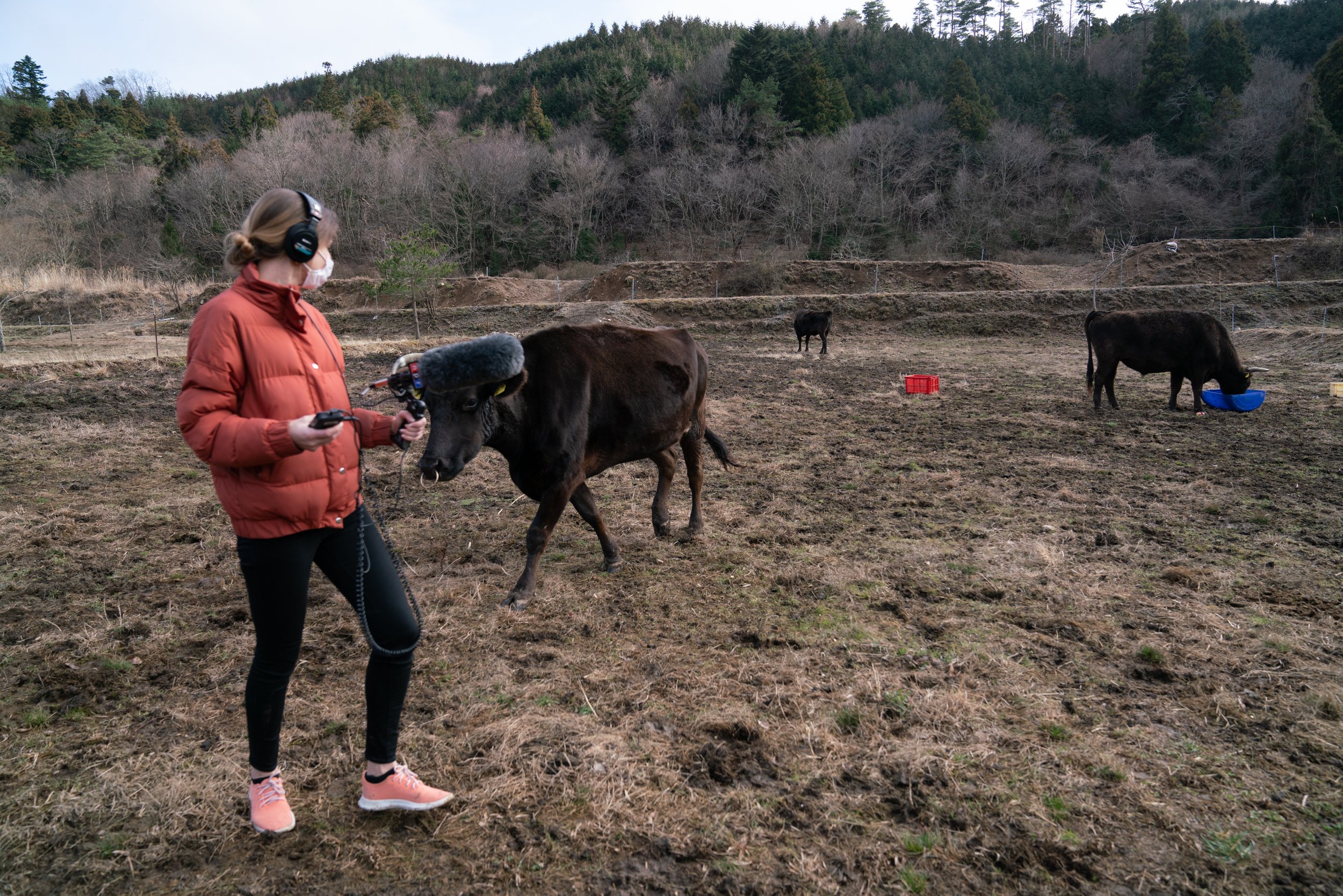
Kat’s Piece #9: A Town Overtaken by Monkeys
Kat promised us an animal story, and she delivered. This one involves macaque monkeys, fireworks and giggles.

Kat’s Piece #8: The Energy Industry Is Recovering, Too
"The social cost of separation from family, losing the land, losing their jobs — how can you measure all of these impacts, estimating the risk of nuclear power?" asks Tatsu Suzuki, a former nuclear engineer and now professor at Nagasaki University.

Kat’s Piece #7: A Tale of Two Towns
How do you reopen a nuclear exclusion zone? It's complicated.

Kat’s Piece #6: Fukushima Ghost Towns
Kat worked with NPR photographer Claire Harbage and the ultra-talented NPR Visuals team to publish a hauntingly beautiful piece about what recovery from disaster means.

Kat’s Piece #5: Two-Way — Series Preview
Kat spoke with Ailsa Chang about her upcoming series focusing on recovery from disaster in Fukushima. “One of my overwhelming takeaways during my time there was just how resilient people are.”

Kat’s Piece #4: A 1,000-Year-Old Cherry Tree Blooms
At more than 1,000 years old, the Takizakura or "waterfall cherry tree," has already lived through wars, famines and natural disasters — and now a pandemic.

Kat’s Piece #3: A Different Kind of Disaster
“The Olympic flame, originally supposed to be a light of hope for this region, will stay in Japan for the next year. It's already being referred to as a light of hope for the end of coronavirus instead.”

Kat’s Piece #2: Warning Signs
Kat arrived in Japan as the nation was grappling with COVID-19. In this photo essay collaboration with NPR's Claire Harbage, she depicts a nation coming to terms with a pandemic in real time, as tradition confronts new realities.

Kat’s Piece #1: Breaking News
News was breaking just as Kat arrived in Japan, when she filed this piece for NPR's All Things Considered.

Emily’s Piece #6: A Changing Mongolia
This immersive digital narrative from Emily Kwong, Claire Harbage and the amazing NPR Visuals team tells the story of a snake eating its own tail.

Emily’s Piece #5: Part 3 of 3 — The Desert
Mongolia is undoubtedly harmed by fossil fuels. But the mining industry is also creating unprecedented GDP growth. How do these two realities square?

Emily’s Piece #4: Part 2 of 3 — The City
Every winter, the air in Ulaanbaatar — Mongolia’s capital — turns toxic. In 2016, it surpassed Shanghai and Delhi as the most polluted capital in the world.

Emily’s Piece #3: Part 1 of 3 — The Steppe
Introducing Emily's three-part series about climate change in Mongolia, set in three locations: the grassland steppe, the capital city of Ulaanbaatar and the Gobi Desert.

Emily’s Piece #2: Camels as Far as the Eye Can See
The two-day Thousand Camel Festival in Bulgan Soum begins with a camel beauty pageant — but it’s what’s on the inside that counts.

Emily’s Piece #1: It’s Like Bowling, But On Ice
In Mongolia, this year’s musun shagai AKA “ice shooting” competition was bumped up two weeks, because the Tamir River was starting to melt.

Emily’s Reporter’s Notebook: Sounds & Silences
I hope that in creating these pieces, we can convey even a small slice of what life is like in Mongolia — the sounds and the silences. All the moments worth waiting for.

Durrie’s Piece #6: Searching for the Past in WWII Shipwrecks
Durrie looks for sunken planes from World War II near Rabaul.

Durrie’s Piece #5: Redefining Masculinity
The Pacific Island nation of Papua New Guinea faces one of the highest rates of intimate partner violence. A question for leaders there is how to stop violence against women. One answer: talk to men.

Durrie’s Reporter’s Notebook: You Never Walk Alone
In small town Papua New Guinea, you never walk alone.

Durrie’s Piece #4: Part 2 of 2 —Volunteers Fight Back Against Domestic Violence
In the South Pacific nation of Papua New Guinea, two out of three women will suffer abuse by their intimate partner. It's a longstanding problem that has eluded solution, but is now being addressed by a volunteer network of so-called human rights defenders.
